
Maria Svarbova was born in 1988 and grew up in the small Slovak village, Slepcany. In the early days of her photographic career, Maria focused primarily on portraiture with surrealist themes. She is specifically drawn to the architecture and time of her parents’ youth, and of the communist Czechoslovakia. The visual aspects of this era largely inform her aesthetic.
In 2014, Maria arrived at a swimming pool in her hometown, Zlate Moravce, to shoot a series of swimmers’ portraits. She broke away from traditional portraiture and explored the expressive potential of space, color, and atmosphere. She found herself fascinated by the functionalist architecture of the communist-era pool and reimagined these settings with a contemporary clarity. Beneath their polished surfaces, her images carry a quiet tension, suggesting unseen stories and the possibility of transformation.
Maria’s postmodern vision invites a powerful dialogue, urging viewers to confront solitude and isolation woven into the human condition. Yet, with her delicate washes of pastels, there’s an understated grace, a quiet celebration of life’s simple beauty.
Maria Svarbova has received several prestigious awards, including the Hasselblad Masters Award, and she earned a spot on Forbes’ 30 under 30 list. Her work has been placed in both private and public collections worldwide and has been featured in prominent publications such as Vogue, Forbes, CNN, and The Guardian. She has two publications, Swimming Pool (2017) and Future Retro (2019)
London is Maria Svarbova's most recent body of work created in 2024 at the London Aquatics Center. In contrast to her previous series where images were dominated by warm pastel hues, vivid saturation, and streams of natural light that softened stark interiors, London marks a tonal shift- its emotional register settling into a more neutral, and at times, somber state.
The designer of the London Aquatics Center, Zaha Hadid, drew inspiration for the center from geometric forms and the fluidity of water. The vast interiors defined by raw, unembellished concrete establish the visual and emotional tone of Maria’s images. At first glance, the The series presents a muted color palette, nearly monochromatic, with brief interruptions of crimson and blue that nod to Maria’s earlier work. The atmosphere feels markedly cooler; rather than evoking retro-futurist nostalgia, it suggests a parallel dystopian reality.
Staying true to her signature style, Maria continues to construct ambiguous scenarios with models dressed in athletic swimwear. The compositions suggest both solitary micro-narratives and complex relational dynamics within multi-figure scenes. Though the swimmers’ expressions remain neutral, a heightened sense of focus, tension, and subtle erosion of humanity pervades. Through minimalist staging and suspended moments, Maria evokes a disquieting atmosphere, one that edges into the unsettling terrain of the Uncanny Valley.




















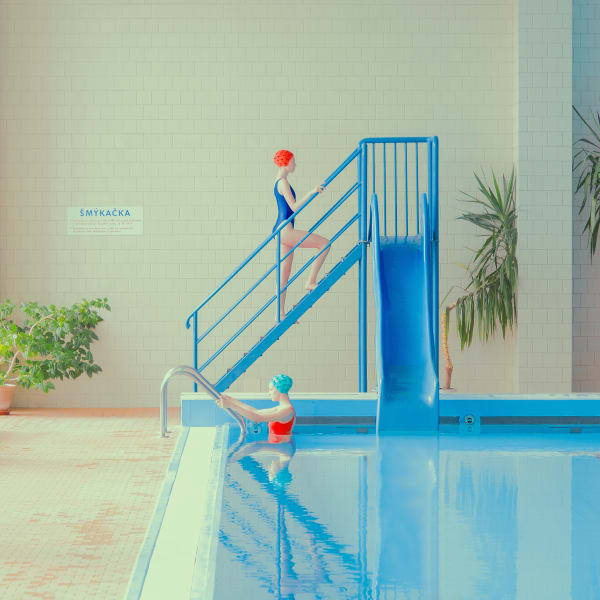



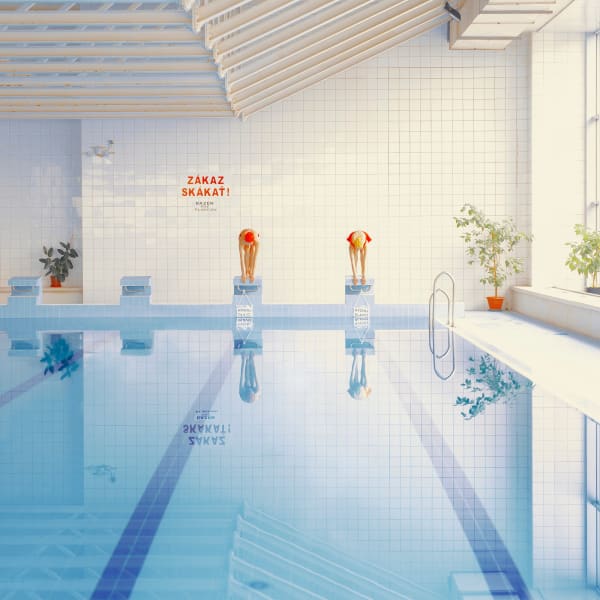


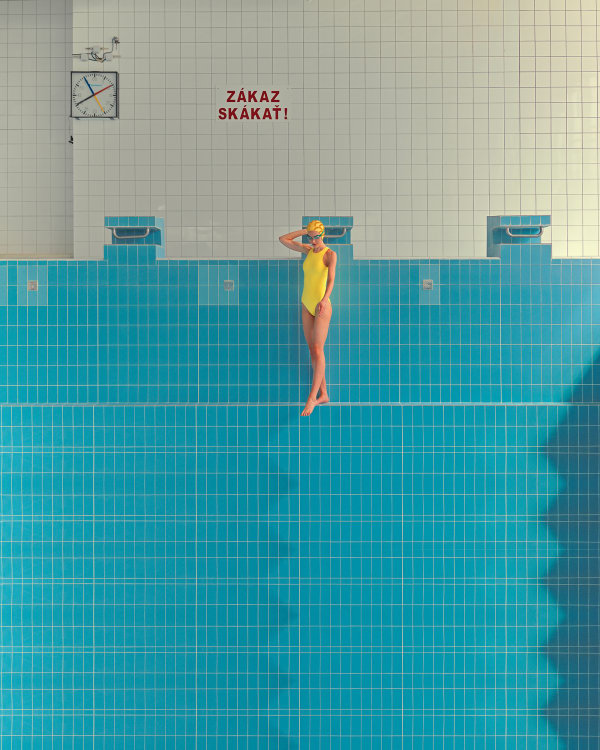
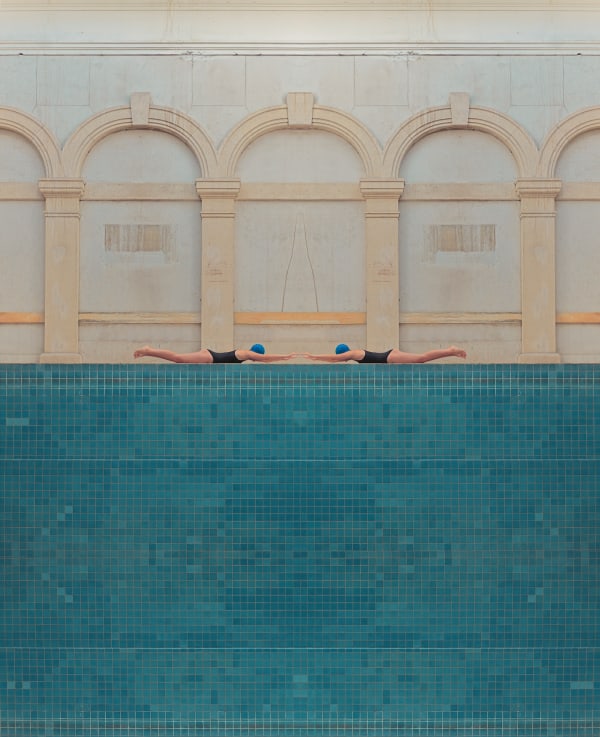
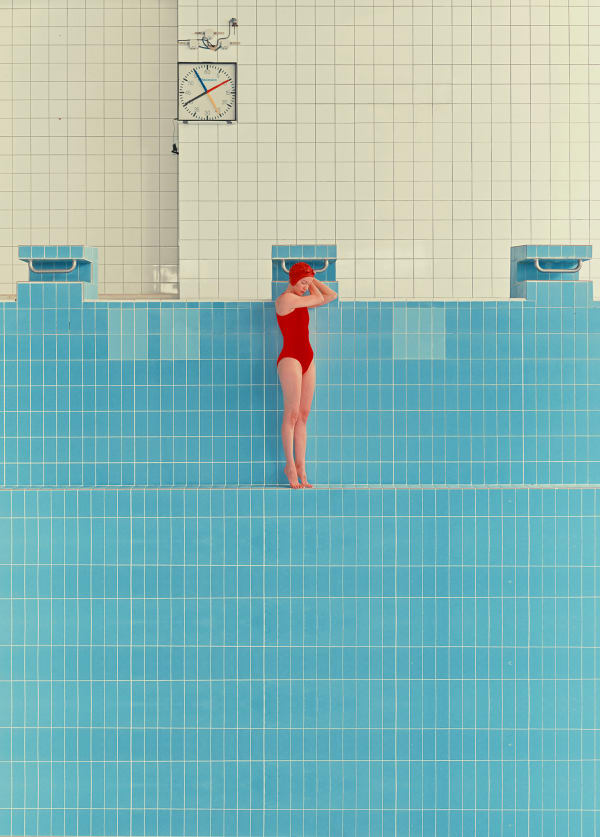











This website uses cookies
This site uses cookies to help make it more useful to you. Please contact us to find out more about our Cookie Policy.